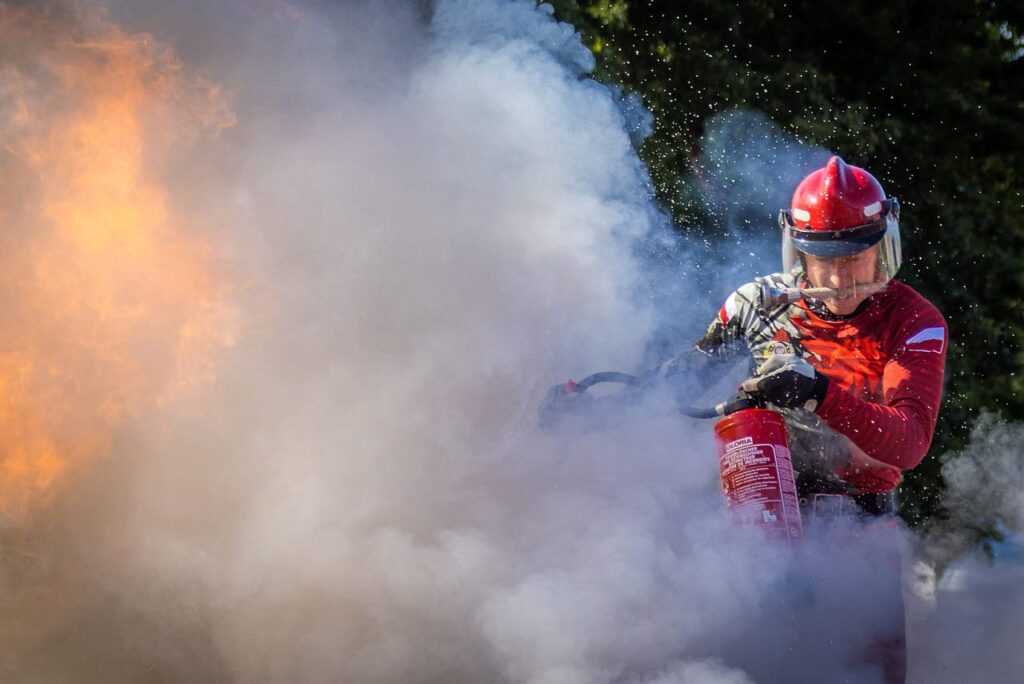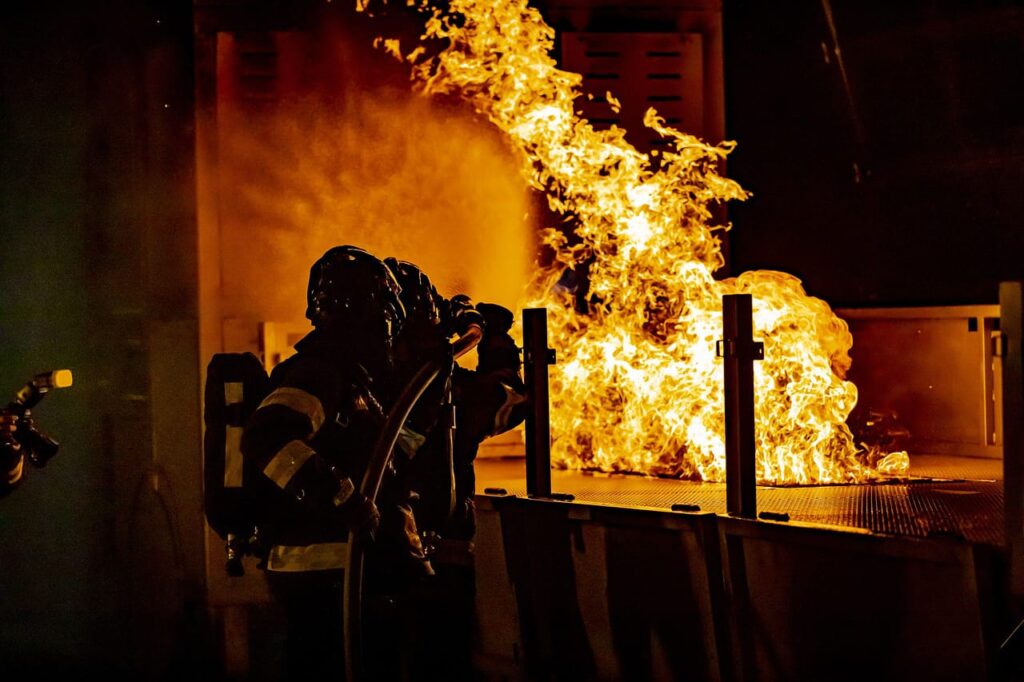Why is fire safety important?
Fire safety is among the most important considerations for any employer, college, school, university, theatre, mall, or management personnel. Fire dangers are the most hazardous of all because, possibly resulting in death, a fire will not only destroy that portion but quickly spread if it breaks out in a building; though few fire incidents are avoidable and predicted early, the majority are not, so fire safety precautions are necessary. Thousands of people are seriously injured and killed every year as a result of fire hazards.
Why is fire safety important to individuals?
Whether it’s an organization or a residence, if fire disasters occur at a severe level, a group of individuals, or a single person, the consequences will be disastrous.
We do not prioritize fire-related issues or awareness because we do not believe they are mandatory or necessary.
Five hundred children under the age of 14 are killed by fire Each year. Residential fires are the most common cause of injury or death among children. They do not know how to react in such dangerous situations, as children are not developed enough or have not been trained to deal with fires. The lack of a fire alarm system is also a factor.
Cooking appliances, unmaintained cylinder tubes, cigarettes, and non-maintenance of fire-prone places are all likely to cause significant house mishaps, among other things. People need to be aware of firefightingfirefighting devices and how to use them to avoid or protect themselves from flames, as well as evacuation procedures,
Why is fire safety paramount in the workplace?
To safeguard employees:
Because there is nothing more valuable than Life, Life is more important than anything else. Fire safety classes teach us about the devices that aid in fire prevention, how to safely exit the building during a fire, the various processes that are involved in handling such fire disaster circumstances,
This fire safety training helps reduce the risks. At any moment and in any location, A fire can occur. In an organization, It could be caused by an electric fire, electric space heaters, lamps, candles, or any other flammable item. Lack of personnel training could result in significant human Life and property loss. In both the domestic and corporate sectors, Fire safety training is required.
For example, if left unattended or not handled correctly, electric space heaters that keep rooms warm might cause fire accidents in warehouses. When a fire happens, as you can’t predict, proper staff training would be beneficial in dealing with a potentially dangerous situation, which can occur at any time; fire safety classes are always beneficial since they deal with the rescue of people and property in danger.
The law demands it:
Including any exceptional or other risks, Every employer is required by law to identify and assess risks and hazards and have a written risk assessment, which should include fire prevention; employers must conduct risk records and assessments in the Safety Statement to comply with Section 19. fire safety should be carried out. A fire assessment entails detecting hazards in the workplace, implementing preventative actions to avoid fires, assessing or finding solutions to the problem,
It would be a beneficial attempt for our employees, to provide fire safety training .in most workplaces to be given fire safety training In fact, the law requires almost all employees. An employer must keep the workplace a safe, risk-free workplace and ensure every employee’s safety.
Keep organizations free from hazards:
Organizations with proper fire safety precautions operate more financially and effectively, and prosperous environment as reducing warehouse material losses and employee absences contributes to the creation of a safe
Increase productivity and profit:
As mentioned earlier, a safe and healthy environment would increase profit and productivity for any organisation. A safe workplace has higher turnover, lower absenteeism, and lower employee injury and illness costs.
Protect property:
Although organisations insure things, money is not the only factor. Some objects are too valuable, customary, or vital to be replaced or purchased again. Therefore, taking fire safety precautions is critical to protecting valuable assets.
Fire Mock Drills in Safety:
What is a fire mock drill?
Fire Mock Drills use fire extinguishers and include mock sessions or demonstrations like raising fire alarms, rescuing trapped people, rescuing people from different floors, etc. They help learners learn evacuation methods during an emergency, react and plan quickly during an emergency, and create confidence.
The organization needs a Fire Audit – :
- To comply with fire safety laws and regulations.
- To avoid litigations
- To ensure workers’ safety
- To add value to your organization
- To gain employees’ trust
What is Fire Safety?
Fire safety minimizes the risk of fire-related accidents and refers to the set of precautions, procedures, and measures taken to prevent fires and ensure the safety of individuals and property in the event of a fire. It involves a combination of preparedness, awareness, and, if fires do happen, proper safety practices to prevent them from occurring and mitigate their impact.
Importance
fire safety is of paramount importance for the following reasons:
Preserving Life – Implementing measures helps ensure their well-being and protects individuals from harm.
Protecting property – By following fire safety protocols, potentially saving valuable assets and investments, there’s minimal risk of property loss and destruction.
Preventing financial losses: Adequately avoid financial burdens associated with property damage, repairs, measures to reduce the risk of fire-related damages, and insurance claims.
Safeguarding the environment—Since fires can release pollutants and destroy natural habitats, toxic gases, and fire safety practices can prevent or minimize harm and incidents to the environment.
Ensuring business continuity – By safeguarding the workplace against fires and maintaining productivity, businesses can protect their employees and avoid costly downtime.
Complying with regulations—Many regulations must be followed, and jurisdictions have specific codes. Adhering to these helps avoid penalties or legal consequences, and it ensures legal compliance.
Promoting public safety – By reducing the overall risk of fire-related accidents and emergencies and prioritizing fire safety, communities can create a safer environment for everyone,
Fire safety
Who is responsible for using a fire extinguisher?
This simply means that when used for escape purposes, for instance, when evacuating a building and the exit route is blocked by fire, Anyone can use a fire extinguisher to exit the building. When used as a first aid firefightingfirefighting appliance, an extinguisher can control, subdue, or even extinguish the fire. The operative can look at the instructions and operate the extinguisher without training.
They will be using the extinguisher as a firefighting appliance, for which they need to have had the appropriate training; when we ask staff members such as fire marshals to investigate and confirm fires,
When do you use a fire extinguisher?
the building/area evacuation has commenced, and After the fire alarm has been raised
The fire is in its very early small in size, contained stages, and only requires one fire extinguisher
unless using an extinguisher with the electrical lightning bolt symbol on the label showing it has been tested for use on this type of fire; the fire does not involve electrics or is not near live electrical equipment,
The room is not full of smoke
correct extinguisher for the type of fire
one meter from the fire (do not move forward unless it is safe to do so)
Emergency services have been called
When do not use a fire extinguisher?
- The fire is too big and would require more than a fire extinguisher
- Fires involving escaping gases and high voltage electrics
- high levels of smoke
- The area is hot
Types of fire extinguishers
Each one has a specific use depending on the type of fire and several types of fire extinguishers.
The five main types of fire extinguishers are:
- Water – used for textiles as the water has a cooling effect and flammable solids such as wood, paper
- Foam – used for flammable liquids (petroleum products, paints, solvents, and thinners), flammable solids (as above), and liquefiable solids (such as butter, tar, wax, and car tires, although the water content in a foam extinguisher may cause these to split and powder may be more appropriate in a foam extinguisher)
- Dry powder* –however, the gas should always be isolated first. Dry powder extinguishers work by smothering the fire, used on Classes A, B, and C, and electrical type fires where Class C is flammable gases (butane, propane, and acetylene, for example),
- CO2 is used for Class B flammable liquids and electrical fires. As CO2 suffocates, an asphyxiant, the fire so extreme care should be taken if using in a confined space such as a cupboard – empty the extinguisher into the cupboard space from the door, shut the door and ensure the exit doorway is held open,
- Wet chemicals are used for Class F fires involving cooking oils and fats, but fires can also commonly be used in Class A and B kitchens with deep-fat fryers. Wet chemical extinguishers are commonly found (commercial kitchens with fryers exceeding 0.4sqm will also require a fixed suppression system)
- Some specialist extinguishers, such as D-type powders for flammable metals, are available for specialist and joint fires.
Fire extinguishers are generally located in escape routes, i.e., usually sited in pairs, and . corridors, landings, stairways, lobbies, etc. Each fire extinguisher location should display a ‘fire extinguisher type’ sign, which explains the content and class of fire. If the area is not evident, i.e., in a recess or behind a column, and for extinguishers greater than 4L, a ‘fire extinguisher location point’ sign should also be used above the ground, the fire extinguisher handle must be located up to 1 meter. This height can be up to 1.5 meters. For smaller fire extinguishers, a unit can be used, followed by a display, if the fire extinguisher cannot be mounted on a wall.


